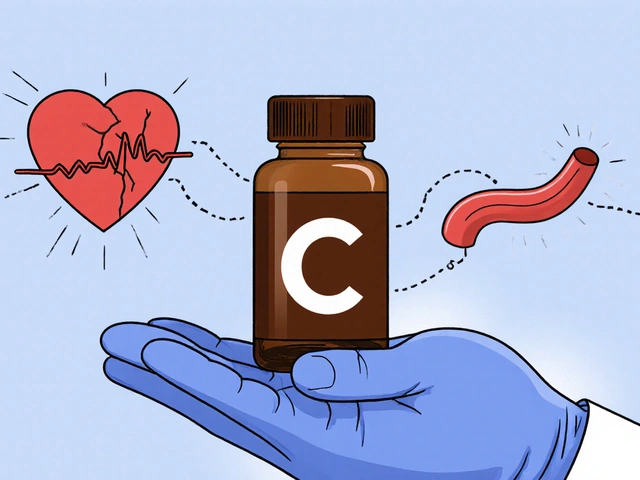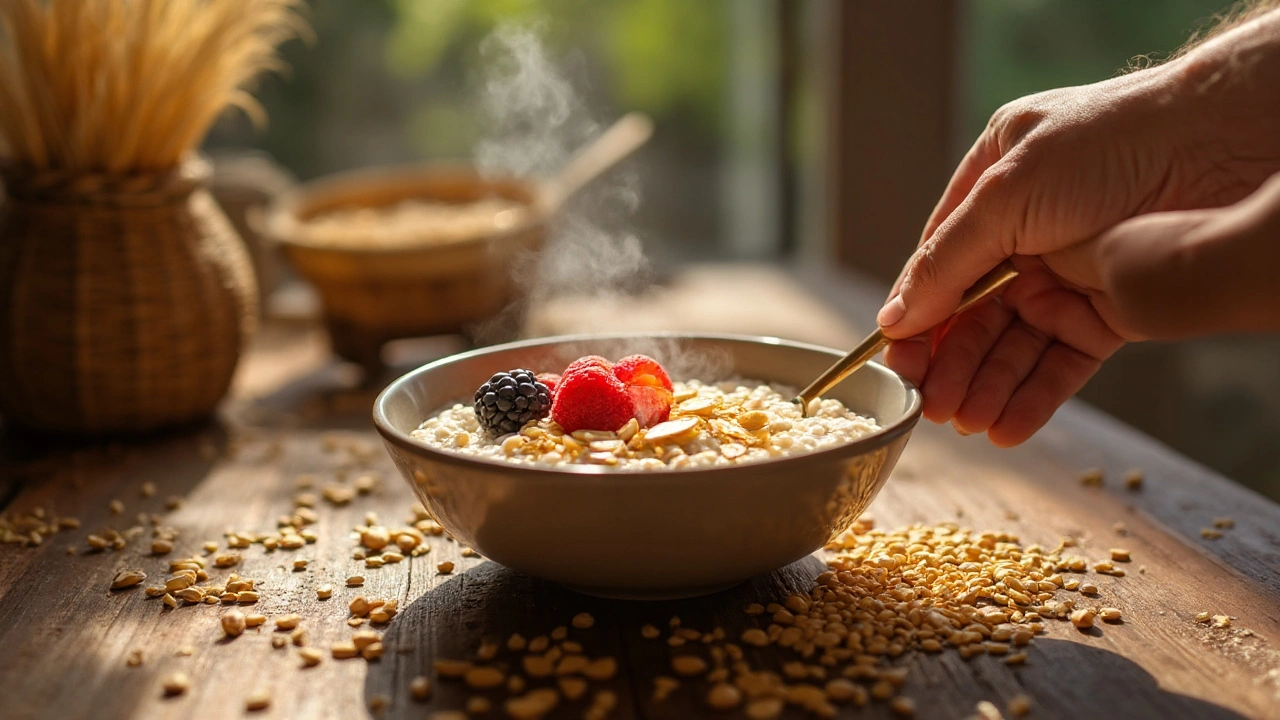Ever wonder why some people swear by a handful of barley each morning while others stick to the usual multivitamins? The answer lies in barley’s dense nutrient punch and the way it works with your body. Below you’ll find the science, the practical tips, and the reasons this grain deserves a permanent spot in your supplement routine.
What Is Barley and Why It’s Considered a Superfood?
Barley is a cereal grain that offers a blend of soluble fiber, resistant starch, and a suite of micronutrients that together support cardiovascular, metabolic, and gut health. Historically cultivated for both food and brewing, modern nutritionists have re‑positioned barley as a superfood because its bioactive compounds deliver benefits far beyond basic calories.
Key Nutrient Profile of Barley
Understanding barley’s power starts with its core components:
- Beta‑glucan is a soluble fiber that forms a gel in the digestive tract, slowing glucose absorption and binding cholesterol molecules.
- Soluble fiber (including beta‑glucan) adds bulk to stool and feeds beneficial gut bacteria.
- Resistant starch escapes digestion in the small intestine, acting as a prebiotic that fuels short‑chain fatty acid production.
- Antioxidants such as phenolic acids and tocopherols help neutralise free radicals, reducing oxidative stress.
- Micronutrients (magnesium, selenium, B‑vitamins) support enzyme function, energy metabolism, and immune resilience.
Combined, these elements give barley a unique health‑promoting profile that outperforms many other grains.
Top Health Benefits
Research from institutions like the University of Cambridge and the American Heart Association shows that barley consistently delivers measurable health improvements.
1. Cardiovascular Support
Beta‑glucan can lower LDL cholesterol by up to 15% when consumed at 3g per day - roughly the amount found in a cup of cooked barley. The gel‑forming fiber also improves arterial elasticity, reducing blood pressure spikes.
2. Blood‑Sugar Regulation
Because soluble fiber slows carbohydrate breakdown, barley produces a lower glycemic response compared with white rice or wheat. A 2019 meta‑analysis reported a 0.5% reduction in HbA1c for type2 diabetics adding barley to meals.
3. Gut Microbiome Boost
Resistant starch and soluble fiber act as prebiotics, encouraging growth of Bifidobacterium and Lactobacillus. Increased short‑chain fatty acids like butyrate improve gut barrier integrity, which may lower systemic inflammation.
4. Weight Management
The satiety‑inducing effect of barley’s fiber helps curb appetite. A controlled trial found participants felt 20% fuller after a barley‑based breakfast, leading to a modest 0.8kg weight loss over four weeks.
5. Antioxidant Protection
Phenolic compounds in barley scavenge reactive oxygen species. In vitro studies show barley extracts reduce LDL oxidation - a key step in atherosclerosis formation.
How to Use Barley as a Dietary Supplement
Turning barley into a practical supplement doesn’t require a pharmacy. Here are simple ways to integrate it into daily life:
- Barley Powder or Flakes - Sprinkle 2‑3tablespoons into smoothies, oatmeal, or yogurt. The powder dissolves easily and retains beta‑glucan potency.
- Cooked Pearl Barley - Prepare a batch weekly; store in the fridge and add to soups, salads, or stir‑fries for a hearty boost.
- Barley‑Based Supplements - Capsules containing 1g of concentrated beta‑glucan are convenient for those who dislike the grain’s texture.
- Barley Tea (Mugicha) - Brew roasted barley for a caffeine‑free, antioxidant‑rich drink popular in Japan.
For optimal results, aim for at least 30g of whole‑grain barley per day, which supplies the recommended 3g of beta‑glucan for cholesterol control.

Potential Drawbacks and How to Manage Them
Barley isn’t a universal solution. A few considerations keep the experience positive:
- Gluten Sensitivity - Barley contains gluten; individuals with celiac disease should avoid it. Those with non‑celiac gluten sensitivity may tolerate small portions, but monitor symptoms.
- Phytic Acid - Like many grains, barley stores phosphorus as phytic acid, which can bind minerals. Soaking or sprouting barley before cooking reduces phytic content.
- Digestive Gas - The high fiber load may cause bloating initially. Increase intake gradually and stay hydrated to ease the transition.
Barley vs Other Whole Grains: A Quick Comparison
| Grain | Beta‑Glucan (g/100g) | Soluble Fiber (g/100g) | Glycemic Index | Gluten |
|---|---|---|---|---|
| Barley (pearled) | 3.6 | 4.0 | 25‑30 | Yes |
| Oats (rolled) | 5.0 | 4.5 | 55‑60 | Usually gluten‑free (contamination risk) |
| Whole Wheat | 0.7 | 2.7 | 70‑75 | Yes |
The table shows barley’s balanced profile: lower glycemic index than oats and wheat, and a solid beta‑glucan content that rivals oats while delivering extra resistant starch.
Related Concepts and Next Steps
Barley sits inside a broader ecosystem of whole‑grain nutrition. Exploring these linked ideas deepens the benefits:
- Whole Grain Diets - Incorporating multiple grains (quinoa, millet, barley) diversifies fiber types and micronutrient intake.
- Phytochemicals - Compounds like lignans and flavonoids work alongside antioxidants to modulate inflammation.
- Prebiotic Foods - Pair barley with other prebiotics (garlic, chicory root) for a synergistic gut boost.
- Functional Nutrition - Use barley as a base for targeted supplements-e.g., cholesterol‑support blends that combine barley beta‑glucan with plant sterols.
After mastering barley, consider diving into topics such as “Optimising Gut Health with Resistant Starch” or “Designing a Heart‑Healthy Meal Plan with Whole Grains”. Each will build on the foundation you’ve created here.
Frequently Asked Questions
How much barley should I consume daily for health benefits?
Aim for 30‑45g of cooked whole‑grain barley (about ½‑¾ cup) or 2‑3tablespoons of barley powder. This provides roughly 3g of beta‑glucan, the amount linked to cholesterol reduction.
Can I use barley if I have a gluten intolerance?
Barley contains gluten, so it’s unsafe for anyone with celiac disease. Those with mild gluten sensitivity may tolerate small servings, but consultation with a healthcare professional is advised.
Is barley powder as effective as whole barley?
Yes, if the powder is minimally processed and retains the hull where most beta‑glucan resides. Look for products that list “whole grain barley” on the label.
Will barley help me lose weight?
Barley’s high fiber content promotes satiety, which can reduce overall calorie intake. Combined with a balanced diet and regular activity, it supports gradual weight loss.
How does barley compare to oats for cholesterol control?
Both grains are rich in beta‑glucan, but barley offers a lower glycemic index and more resistant starch, making it slightly superior for simultaneous cholesterol and blood‑sugar management.




Comments
18 Comments
Brian Perry
i tried barley powder in my smoothie and now my stomach sounds like a washing machine on spin cycle 😅
Chris Jahmil Ignacio
this is just big agri pushing grain supplements because they dont want you eating real food like meat and eggs the real superfoods are butter and bacon and dont let them tell you otherwise
Paul Corcoran
barley is one of those quiet heroes in nutrition. i started adding it to my soups last winter and honestly my energy levels have been way more stable. no more 3pm crashes. also the texture is kind of comforting like a warm hug in a bowl
Colin Mitchell
i love barley tea! i drink it cold during summer. tastes like toasted nuts and no caffeine. my grandma used to make it back in korea and now i make it every week. simple but powerful
Stacy Natanielle
I. AM. SO. DISAPPOINTED. IN. YOU. This is just another grain-based placebo wrapped in pseudoscientific jargon. Beta-glucan? Please. You're just replacing a multivitamin with a $10 bag of grain. And don't get me started on the glycemic index claims. 🤦♀️
kelly mckeown
i started with just 1 tbsp a day and my bloating got better after a week. i was skeptical but now i keep a jar of cooked barley in the fridge. it’s not magic but it feels good to eat something real
Tom Costello
barley’s underrated. people jump on quinoa and farro but barley’s been feeding humans for 10,000 years. it’s not flashy but it’s reliable. i mix it with lentils and call it a day. no fancy supplements needed
dylan dowsett
You’re telling me to eat gluten? Are you aware that 40% of Americans have some form of gut inflammation? This is just another way to make people sick. You’re not helping. You’re enabling. 🚩
Susan Haboustak
The research cited is cherry-picked. Most studies are industry-funded. Beta-glucan from barley? Same molecule as oats. Why pay more for barley? Also, phytic acid binds zinc and iron. You’re just trading one problem for another.
Chad Kennedy
i tried it. tasted like dirt. wasted my time. why not just take a pill?
Siddharth Notani
In India, we call it jau. Used in winter porridge and soups. Very grounding. 30g daily is perfect. I also soak overnight to reduce phytates. Simple, effective. 🙏
Cyndy Gregoria
you can do this. start small. just add a spoon to your oatmeal. your body will thank you. i did it and now i feel like i’m fueling with real energy, not sugar crashes. you got this 💪
Akash Sharma
I’ve been eating barley for years but I’m curious-how does the beta-glucan content compare between hulled, pearled, and flour forms? I’ve seen conflicting info. Also, does toasting or roasting degrade the fiber? I make my own barley tea from roasted grains and wonder if I’m losing benefits. Would love to hear from someone who’s tested this scientifically.
Justin Hampton
this is just another gluten trap disguised as wellness. you think you’re healing your gut but you’re just feeding the inflammation. stop drinking the kool-aid
Pooja Surnar
barley? really? you people are so gullible. gluten is poison. if you're not eating paleo or keto you're just feeding your cancer. #glutenfreelife
Sandridge Nelia
I started with barley tea after my gut issues. It was gentle, warm, and didn’t spike my blood sugar. I pair it with ginger and a dash of honey. My digestion improved slowly but steadily. No drama, just consistency. 🌿
Mark Gallagher
Barley is for weaklings. Real Americans eat steak and eggs. This grain nonsense is imported from Europe and Asia. We don’t need this weak food in this country. Get back to real nutrition.
Brian Perry
^^^ i tried the tea too. it’s weirdly addictive. like coffee but without the jitters. now i’m hooked. also my farts smell less like death
Write a comment